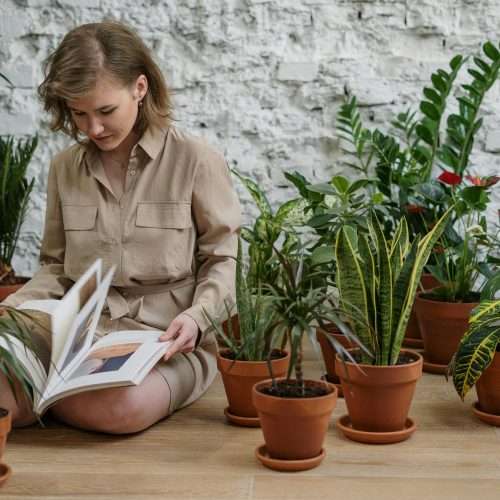Art has been an integral part of human history, expressing emotions, capturing moments, and reflecting the beauty of the world around us. As technology advances, there is a growing debate about the benefits and drawbacks of digital art compared to traditional art mediums. In this article, we will explore the characteristics, artistic processes, flexibility, impact of technology, and quality of both digital and traditional art mediums, helping you decide which is the best medium for creating customized artwork.
Understanding Digital and Traditional Art Mediums
Before comparing, let’s define what digital and traditional art mediums entail.
Defining Digital Art
Digital art refers to artworks created using digital tools such as computers, software, and electronic devices. It allows artists to create, manipulate, and enhance their artwork using digital techniques.
One of the key advantages of digital art is its accessibility. Artists can create digital artworks using various devices, from professional graphic tablets to smartphones and virtual reality platforms. This accessibility has democratized art, allowing aspiring artists from all walks of life to explore their creativity.
What is Traditional Art?
On the other hand, traditional art involves creating artwork using conventional tools like brushes, pencils, paint, and canvas. This medium encompasses various forms, such as painting, drawing, sculpture, and more.
One of the distinct characteristics of traditional art is its tangible nature. Traditional artworks exist physically, allowing viewers to appreciate the textures, brushstrokes, and intricacies up close. This tactile experience adds a layer of intimacy and connection between the artwork and the audience.
Traditional art also holds cultural significance, often reflecting a particular community or society’s values, beliefs, and heritage. It serves as a visual representation of history, traditions, and collective identity, preserving cultural heritage for future generations.
While digital art has gained prominence in recent years, traditional art continues to thrive, with artists dedicated to preserving and evolving traditional techniques. Many artists combine digital and traditional mediums, blending the best of both worlds to create unique and captivating artworks.
The Process of Creating Customized Artworks
Creating customized artwork, whether digital or traditional, involves a series of steps that artists follow to bring their visions to life.
Digital Art Creation Process
In digital art, the process starts with sketching ideas using digital devices like tablets or graphic pads. Artists then refine their ideas with software tools, experimenting with different colors, textures, and effects. The final artwork can be printed or displayed digitally, allowing easy reproduction and distribution.
Traditional Art Creation Process
In contrast, traditional art creation begins with sketching ideas on paper or canvas. Artists work with various conventional materials, applying layers of paint or pencil strokes to create depth and texture. The final artwork is often unique and cannot be duplicated exactly.
Comparing the Flexibility of Digital and Traditional Art
Flexibility is an essential factor to consider when choosing a medium for creating customized art. Both digital and traditional art mediums offer different levels of customization possibilities.
Customization Options in Digital Art
Digital art allows for limitless customization options. Artists can easily experiment with different colors, textures, and effects, quickly undoing and redoing changes. This medium also provides the ability to resize, crop, or rearrange elements within the artwork, enabling artists to create dynamic and visually stunning pieces.
Customization Possibilities in Traditional Art
Though more limited in terms of immediate changes, traditional art offers unique possibilities for customization. Artists can explore blending, glazing, and layering techniques to achieve desired effects. Additionally, the tactile aspect of conventional art mediums allows artists to infuse their personal touch into every brushstroke or pencil line.
Envision a loved ones painting that doesn’t just portray faces but captures the essence, the laughter, the shared silences, and the unspoken bonds. Such is the transformative power of art when coupled with personalization. Beyond aesthetics, it’s about breathing life into moments, making them eternally tangible. At Memorialize Art, this vision becomes a reality. With seasoned artists dedicated to creating masterpieces that resonate deeply with your soul, every stroke, shade, and texture is tailored to memorialize your cherished memories.
The Impact of Technology on Art Customization
The rapid advancement of technology has significantly influenced both digital and traditional art, shaping how artists create and customize their artworks.
The Role of Software in Digital Art
Software plays a vital role in the creation and customization of digital art. It offers sophisticated tools and techniques that enhance the creative process, enabling artists to achieve complex and intricate results that may be challenging to attain in traditional art mediums. Artists can also leverage digital platforms to share their work worldwide, reaching a larger audience.
How Traditional Art Adapts to Technological Advances
While technology has primarily impacted digital art, traditional art has also embraced technological advancements. Artists now have access to various tools and materials that complement traditional techniques, allowing for hybrid artworks that combine elements of both digital and traditional mediums. This integration enables artists to push the boundaries of creativity, exploring new possibilities.
Evaluating the Quality of Digital and Traditional Customized Artworks
When assessing the quality of customized artworks, both digital and traditional mediums have their own merits.
Assessing the Quality of Digital Art
Digital art provides a high level of precision and consistency. The ability to manipulate and refine details allows artists to create flawless and polished artwork. However, some critics argue that the digital medium may lack the tactile and emotional connection often associated with traditional art.
Judging the Quality of Traditional Art
Traditional art, on the other hand, offers a sense of authenticity and craftsmanship. Each stroke showcases the artist’s skill and dedication to their craft. Traditional artworks’ imperfections and unique characteristics contribute to their charm and appeal.
Takeaway
Deciding between digital and traditional mediums for customized artwork is a deeply personal choice, influenced by your individual tastes, artistic ambitions, and the kind of impression you wish to evoke. While digital art provides a canvas for boundless creativity with a modern touch, traditional art stands tall, offering an irreplaceable tactile and authentic connection with the creation process, a rich texture brought to life through meticulous craftsmanship. Both paths boast unparalleled strengths, carving significant niches in the art domain. Yet, regardless of the medium, it is the soul, the dedication, and the vision poured into the work that defines its essence.
As you stand at this crossroad of choice, remember that your vision can transcend mediums when guided by the skilled artisans at Memorialize Art. Be it pixels or paint brushes, they nurture each creation with a touch of love, embodying the transformative power of art that remains unchanged, ever mesmerizing, and deeply personal. Through their experienced hands, your vision reaches its fullest potential, blossoming into artworks that are not just seen but felt, becoming timeless testimonies of treasured moments and heartfelt stories.






